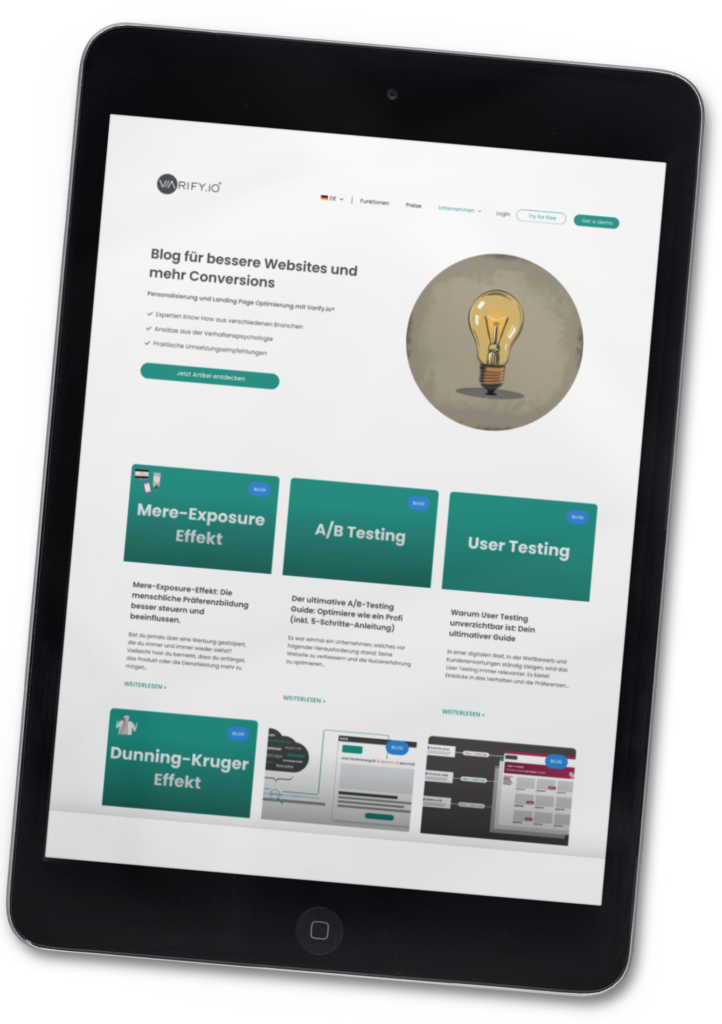"The probability of selling something to an existing customer is up to 70 %. For new customers, it is only 5 to 20 %."
Harvard Business Review
Despite these figures, a large part of the budget is often spent on acquiring new customers.
Upselling offers an efficient way of increasing the value of the shopping basket, boosting customer satisfaction and sustainably expanding customer lifetime value.

Table of contents
What is upselling? Definition, goals & basics
Upselling means offering a customer a higher-value version of their chosen product or service - with the aim of increasing benefits and boosting sales at the same time.
Essentially, the aim is to make an offer that better suits the customer's needs. This could be a more powerful device, a more comprehensive software package or an upgrade with additional functions.
It is important to distinguish it from cross-selling:
While upselling is an upgrade of the originally selected product, cross-selling offers supplementary products or services.
- In e-commerce, upselling is the smartphone with more memory, while cross-selling is the matching protective case.
- In the SaaS sector, upselling means switching to a higher package, while cross-selling refers to additional add-ons or support options.

Both approaches pursue the same goal: creating more value, for the customer and for the company.
When implemented correctly, upselling helps the customer to make a better decision. It reduces complexity, promotes trust and ensures a more coherent user experience.
The psychology of upselling
People do not make purely rational decisions, especially when making a purchase. This is exactly where successful upselling comes in. It uses psychological effects that promote trust, make decisions easier and increase the perceived added value.
1. trust decides
Upselling only works if there is trust. Customers need to be sure that the recommendation is in their interest. Authentic communication, consistent user experiences and social proof such as customer reviews significantly increase acceptance.
2. reciprocity works
A small bonus or unexpected help can have a big impact. Anyone who has previously had a positive experience is more willing to accept an upgrade or additional offer. Giving creates a willingness to give.
3. price psychology guides decisions
Customers do not evaluate prices in absolute terms, but in comparison. If a higher-priced product is shown next to a cheaper one, the more expensive one often appears to be the better choice. At the same time, the cheaper one appears more attractive.
A specifically set anchor price or a package comparison helps the upselling offer to be perceived as reasonable and worthwhile.
4. timing is the key
Even the best offer falls flat if it comes at the wrong time. The ideal moment is when the customer is active, has already gained trust and sees a clear next step ahead of them. In the SaaS context, this can be after the feature has been used, in e-commerce directly at the checkout or shortly afterwards.
Strategies & tactics for effective upselling
Upselling does not work by chance. It needs structure, relevance and good timing. The following strategies are among the most effective levers.
1. time-limited offers
An upgrade with a deadline has a double effect: it increases the perceived value and reduces decision postponement. Examples: "Today only: 3 months Premium free" or "Upgrade until Sunday, then regular price".
2. packaging and bundles
If you put together an attractive overall package from individual products, you offer the customer more benefits at a perceived lower price. This works particularly well if the bundle value is made clearly visible.
Tip: The middle of the three packages is often the most attractive if it offers the best price-performance ratio.
3. personalization with AI
The more precisely the offer matches user behavior, the higher the acceptance rate. Tools that evaluate purchases, clicks or usage patterns enable individual upselling recommendations in real time - in the checkout, in the account area or by email.
4. cross channel upselling
An upsell does not have to take place where the initial purchase was made. Email campaigns, in-app messages, customer portals or even push notifications offer additional contact points. The decisive factor is the context; the channel must match the user's behavior.
Relevant key figures for successful upselling
Without measurable results, upselling remains just a gut feeling. If you want to tap into real sales potential, you need clear key figures, targeted tests and feedback directly from user behavior.
These KPIs show whether your upselling is working
- AOV (Average Order Value): Is the average order value noticeably higher due to upselling?
- Conversion rate: How many users actively accept the upsell?
- CLV (Customer Lifetime Value): Does the long-term value of a customer change as a result of an upgrade?
These three key figures form the basis for data-based management. They make successes visible and show where there is a need for improvement.
A/B testing makes upselling measurable
What works better - a different placement, a new wording or an additional benefit note?
Use A/B tests to find out what really works. Test only one variable at a time, for example:
- Time of placement
- Type of communication
- Package structure or tiered pricing
A clear test structure ensures that you can interpret the results reliably.
Figures provide trends and feedback shows causes. Ask specifically why an upselling offer was not accepted. Short surveys after the checkout or in the account area are often enough to find out whether the problem was with the offer itself or with the way it was presented.
Conclusion: quick wins for better upselling
Upselling is not an aggressive sales tactic, but a strategic tool that creates added value for customers and companies. The decisive factor is how and when you place offers.
With the right levers, sales per customer can be significantly increased without disrupting the shopping experience.
Individual references
- Gallo, A. (2014): The value of keeping the right customers. Harvard Business Review. [Accessed on: 15.04.2025]

